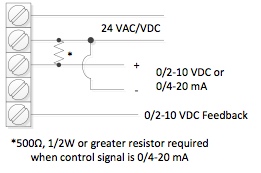If there were an awards show for Building Automation and Energy Management; there would have to be a lifetime achievement award. All awards shows have them. For Building Automation and Energy Management there may be none more deserving than Ohm’s Law. Ohm’s law may be the Beatles of Building Automation and Energy Management. The influence of the Beatles runs deep in popular music. Simple, pretty melodies like Dear Prudence and crushing grooves like Helter Skelter can be heard in music today much the same as the relationship of voltage, current, and resistance are used in Building Automation and Energy Management. That said I would like to nominate Ohm’s Law for a Building Automation and Energy Management Lifetime Achievement Award.
Ohm’s Law
Ohm’s law is the very foundation of how Building Automation and Energy Management get done. The simple relationship of Voltage, Current, and Resistance makes controlling a building with a computer possible. Ohm’s Law is stated as:
V=I X R
I=V/R
R=V/I
V=voltage expressed in Volts
I = current expressed in Amps (note that 1000 milliamps = 1 Amp or 1 mA = 0.001A)
R = resistance expressed in Ohms
One common use of Ohm’s Law is signal conversion. Using a 4-20mA signal to operate a device controlled by a 2-10V signal is a fairly common occurrence in Building Automation and Energy Management. Here is how it works:
V=I X R
V = 4 mA X 500Ω
V= 2
V=I X R
V = 20 mA X 500Ω
V = 10
Applying a 500Ω resistor in parallel to a 4-20 mA signal creates a 2 – 10 Volt control signal. Here is a wiring diagram from a direct-coupled actuator that uses this:

Another application to consider is how does a Building Automation or Energy Management system sense temperature? Ohm’s Law, that’s how. Thermistors and RTDs are devices that have resistances that change with temperature. Since resistance can be calculated by applying known voltage and current values, computers can “sense” temperature using Ohm’s Law (R = V/I). Once the resistance is known the temperature can be associated via either a calculation or look up table.

